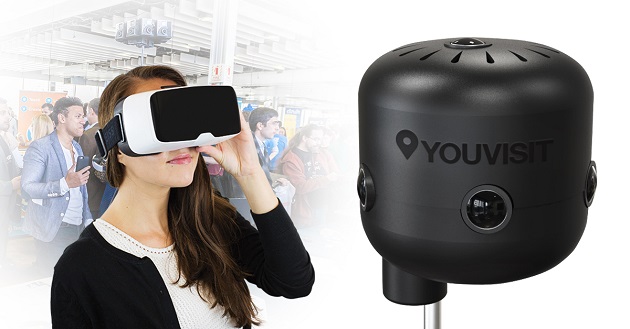Virtual tourism is set to be one of the biggest areas of virtual reality (VR) technology in the future. Head-mounted displays (HMDs) such as the Oculus Rift and even Google Cardboard will allow users to visit locations on the other side of the world from the comfort of their own homes. One company that’s excited about this future is YouVisit, a group that offers virtual campus tours and much more 360 degree content for real life locations. The company has been working hard in VR over the past few years, and VRFocus recently spoke to it about that work.
In the interview below CEO Abi Mandelbaum talks about how YouVisit first came to work in VR, and where the tech might go from here. Mandelbaum talks about the platform’s recent successes, having reach six million users, and why mobile VR will be important to the future of the service.
VRFocus: For those that don’t know, what is YouVisit and what service does it offer?
Abi Mandelbaum (AM): When we launched YouVisit in 2010 it was in reaction to a realization that a lifetime is too short to explore and experience everything the world has to offer—no matter how much you travel. YouVisit’s mission is to use virtual reality to make those experiences accessible to as many people as possible, spark curiosity, inspire exploration, and create a sense of global citizenship. YouVisit has one of the world’s largest collections of interactive virtual reality content. Individuals, institutions, and businesses can easily create, share, and enjoy virtual reality experiences on their VR headsets, mobile devices, and desktops.
VRFocus: When did the company first start looking at head-mounted displays (HMDs) as a new means of delivery?
AM: YouVist’s goal has always been to create immersive virtual experiences that enable people to feel as if they are actually there. We started adapting our content and creating new content for HMDs in 2012, in anticipation that the Oculus Rift Kickstarter would lead to a major technology revolution.
VRFocus: Do you find VR is the preferred way to consume YouVisit content?
AM: People can consume our content in a variety of ways, including on mobile devices, PCs, and VR headsets. All of our content has been designed to be highly interactive and engaging. There is no right way to consume our content. We want people to have a breath-taking experience, regardless of how they choose to view our virtual experiences.
VRFocus: How was YouVisit able to reach 6 million users last year?
AM: At YouVisit, we pride ourselves on creating high quality experiences of all types. This is one of the main reasons—if not the main reason—why we’ve been able to reach 6 million users. People can come to our site or download our app and explore thousands of unique virtual experiences, from travel destinations to concerts.
VRFocus: What plans do you have for expansion in VR?
AM: While we’re working on a number of exciting projects, we truly believe the next step in helping the VR industry grow relies on how we encourage and empower regular people to create and share their own experiences. Consumers are all about viewing and sharing pictures and video across all social media platforms, but what if they had the ability to give friends the chance to be a part of and live their experiences? 2016 will be the year VR companies make this possible for consumers. At YouVisit, we’re focused on providing the right tools that will help people develop and share VR experiences of their vacations, special events, new homes, and all other milestones in the same way they now use Facebook, Instagram and YouTube.
VRFocus: Do you see mobile VR as the main platform for YouVisit services in the future or do you think it will migrate successfully to PC and console?
AM: Mobile VR is certainly how the industry will take off. Think about it: 64% of Americans own smartphones. This is the most available platform for consumers to get their first taste of VR. We’ve already optimized our virtual experiences for mobile, and will continue to refine our content to provide the best possible experience. This doesn’t mean that we aren’t creating content for PC and consoles, but we do think that mobile will be the most important platform in the years to come.
VRFocus: Are you looking at integrating new systems such as the HTC Vive’s Room-Scale tracking?
AM: We’re always looking for ways to make our VR experiences easier to use, as well as helping them become that much more realistic and interactive for viewers. We feel virtual reality should be as close to real life as possible and new systems are finally allowing for this to be true—whether through incorporating eye tracking and motion-sensing, we’re working to decipher how to best use new systems in order to make our VR content seamless and engaging for consumers.
VRFocus: Where do you see VR in general heading and how big of a role does YouVisit play a part in that?
AM: While business applications of VR are continuing to grow in popularity and uses, the big focus for VR now is consumer adoption. VR developers are now starting to examine how they can better empower viewers to take control of their experiences. The ability to develop, personalize, share, and engage with their own experiences, in the same way they would a YouTube video, is what will make this technology that much more appealing. This approach—interactivity through socially-shared VR content—is the industry’s best bet for gaining long-term consumer adoption.
-END-
The post YouVisit talks VR Tourism, Mobile’s Importance and the Future appeared first on VRFocus.
















